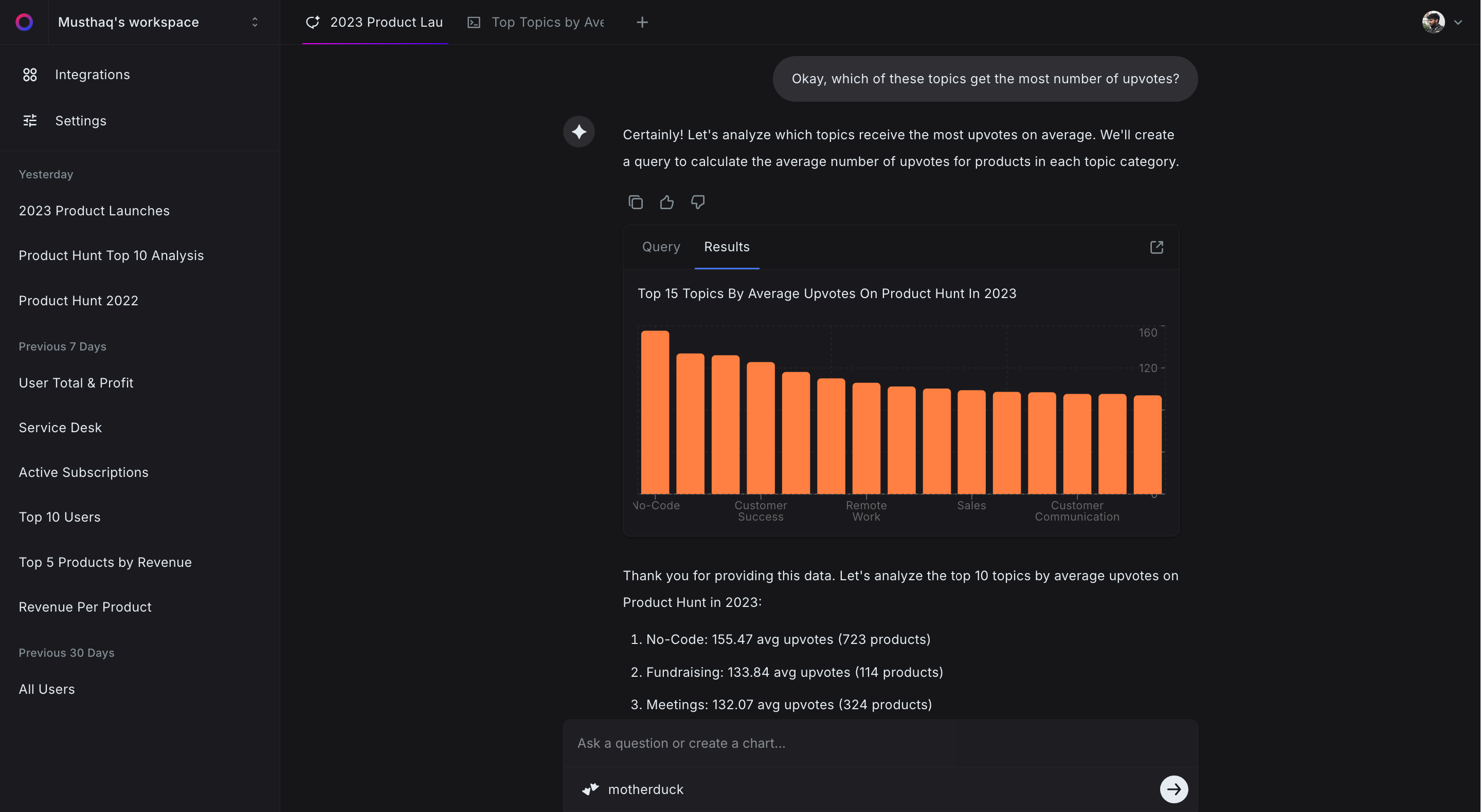10 Essential SaaS KPIs Every Product Manager Should Track

In SaaS, product managers rely on key performance indicators (KPIs) to understand how their product is performing and make decisions that support growth. Tracking the right metrics helps identify what’s working, what needs improvement, and where to focus next. This article covers 10 important SaaS metrics, why they matter, and how to use SQL to get the data you need.
We’ll also introduce Sequel, a tool built to make retrieving these metrics easier. With its AI-powered interface, Sequel helps product managers quickly access and analyze data without needing advanced SQL skills, saving time and effort.
1. Monthly Recurring Revenue (MRR)
Why It Matters:
MRR represents the predictable revenue a SaaS business generates each month. It's a vital metric for assessing financial health and forecasting growth.
SQL Query:
SELECT
SUM(subscription_amount) AS MRR
FROM subscriptions
WHERE subscription_status = 'active' -- Adjust based on your database's status indicators
AND billing_cycle = 'monthly' -- Ensure a 'billing_cycle' field exists
AND payment_date BETWEEN '2024-11-01' AND '2024-11-30'; -- Specify the desired month
Note: Modify the table and column names to match your database schema.
2. Customer Lifetime Value (CLTV)
Why It Matters:
CLTV estimates the total revenue a customer will generate over their entire relationship with your company. Understanding CLTV helps in strategizing customer acquisition and retention efforts.
SQL Query:
SELECT
customer_id,
SUM(payment_amount) AS lifetime_value
FROM payments
GROUP BY customer_id
HAVING lifetime_value > 0; -- Filters out customers without payments
Note: Ensure that payment_amount and customer_id correspond to your database's columns.
3. Daily Active Users (DAU)
Why It Matters:
DAU measures the number of unique users engaging with your product daily, indicating user engagement and product stickiness.
SQL Query:
SELECT
activity_date,
COUNT(DISTINCT user_id) AS daily_active_users
FROM user_activity
WHERE activity_date = CURRENT_DATE; -- Adjust for specific dates as needed
Note: Replace user_activity and user_id with your actual table and column names.
4. Average Revenue Per User (ARPU)
Why It Matters:
ARPU indicates the average revenue generated per user, helping assess pricing strategies and revenue efficiency.
SQL Query:
SELECT
SUM(subscription_amount) / COUNT(DISTINCT customer_id) AS arpu
FROM subscriptions
WHERE subscription_status = 'active'; -- Define criteria for active subscriptions
Note: Ensure subscription_amount and customer_id align with your database structure.
5. Feature Adoption Rate
Why It Matters:
This metric tracks the percentage of users utilizing a specific feature, providing insights into feature popularity and user engagement.
SQL Query:
SELECT
COUNT(DISTINCT user_id) * 100.0 / (SELECT COUNT(DISTINCT user_id) FROM user_activity) AS adoption_rate
FROM user_activity
WHERE feature_used = 'new_feature' -- Replace with the actual feature name
AND activity_date BETWEEN '2024-11-01' AND '2024-11-30'; -- Specify the time frame
Note: Adjust feature_used and date ranges as per your requirements.
6. Customer Retention Rate
Why It Matters:
Retention rate reflects the percentage of customers who continue using your product over a specific period, indicating customer satisfaction and product value.
SQL Query:
SELECT
COUNT(DISTINCT user_id) * 100.0 / (SELECT COUNT(DISTINCT user_id) FROM users WHERE signup_date < '2024-11-01') AS retention_rate
FROM user_activity
WHERE activity_date BETWEEN '2024-11-01' AND '2024-11-30'; -- Define the retention period
Note: Modify table and column names to match your database.
7. Churn Rate
Why It Matters:
Churn rate indicates the percentage of customers who discontinue using your service, highlighting potential issues in customer satisfaction or product performance.
SQL Query:
SELECT
COUNT(*) * 100.0 / (SELECT COUNT(*) FROM subscriptions WHERE subscription_status = 'active') AS churn_rate
FROM subscriptions
WHERE subscription_status = 'canceled' -- Adjust based on your database's status indicators
AND cancellation_date BETWEEN '2024-11-01' AND '2024-11-30'; -- Specify the time frame
Note: Ensure subscription_status and cancellation_date correspond to your schema.
8. Trial Conversion Rate
Why It Matters:
This metric measures the effectiveness of converting free trial users into paying customers, reflecting the product's value proposition and onboarding process.
SQL Query:
SELECT
COUNT(DISTINCT user_id) * 100.0 / (SELECT COUNT(DISTINCT user_id) FROM trials WHERE trial_start_date BETWEEN '2024-10-01' AND '2024-10-31') AS conversion_rate
FROM subscriptions
WHERE subscription_status = 'active' -- Define criteria for successful conversion
AND start_date BETWEEN '2024-11-01' AND **2024-11-30';** -- Specify the desired date range
2024-11-30'; -- Specify the desired date range
9. Revenue Growth Rate
Why It Matters:
Revenue growth rate measures the momentum of your business by showing how much your revenue is increasing over time. It is essential for understanding whether your SaaS product is scaling effectively.
SQL Query:
WITH revenue_last_month AS (
SELECT
SUM(subscription_amount) AS revenue
FROM subscriptions
WHERE payment_date BETWEEN '2024-10-01' AND '2024-10-31' -- Replace with the previous month
),
revenue_this_month AS (
SELECT
SUM(subscription_amount) AS revenue
FROM subscriptions
WHERE payment_date BETWEEN '2024-11-01' AND '2024-11-30' -- Replace with the current month
)
SELECT
(rtm.revenue - rlm.revenue) * 100.0 / rlm.revenue AS revenue_growth_rate
FROM revenue_last_month rlm, revenue_this_month rtm;
Note: Make sure the subscription_amount and payment_date columns align with your database schema.
10. Active Customer Count
Why It Matters:
Tracking the total number of active customers gives you a snapshot of your current customer base. This is a foundational metric for evaluating business growth and stability.
SQL Query:
SELECT
COUNT(DISTINCT customer_id) AS active_customers
FROM subscriptions
WHERE subscription_status = 'active'; -- Ensure this matches your criteria for active customers
Note: Replace subscription_status and customer_id with the relevant fields from your database.
How Sequel Makes SaaS KPI Tracking Effortless

As a product manager, writing SQL queries and analyzing data can be time-consuming, especially if you don’t have a technical background. That’s where Sequel comes in.
Sequel’s Features for SaaS Product Managers:
- Natural Language Querying: Type questions like "What is our DAU for this week?" and get instant results—no need to write SQL manually.
- Pre-Built Templates: Access ready-made queries for popular SaaS metrics like MRR, CLTV, and churn rate.
- Automated Dashboards: Create real-time dashboards to monitor KPIs effortlessly.
- Collaboration Tools: Share insights with your team quickly through dynamic reports and integrations.
By using Sequel, you can focus on making data-driven decisions without the technical overhead.
Conclusion
Monitoring the right KPIs is the backbone of effective SaaS product management. Metrics like MRR, CLTV, DAU, and ARPU provide critical insights into your product’s performance, customer behavior, and revenue trends. While SQL is a powerful tool to extract this data, tools like Sequel simplify the process, empowering product managers to access insights faster and act smarter.
Ready to elevate your KPI tracking?
Try Sequel today and discover how easy it is to stay on top of your SaaS metrics.
Start exploring your data with Sequel
Save hours of time writing SQL queries. Get started for free.
